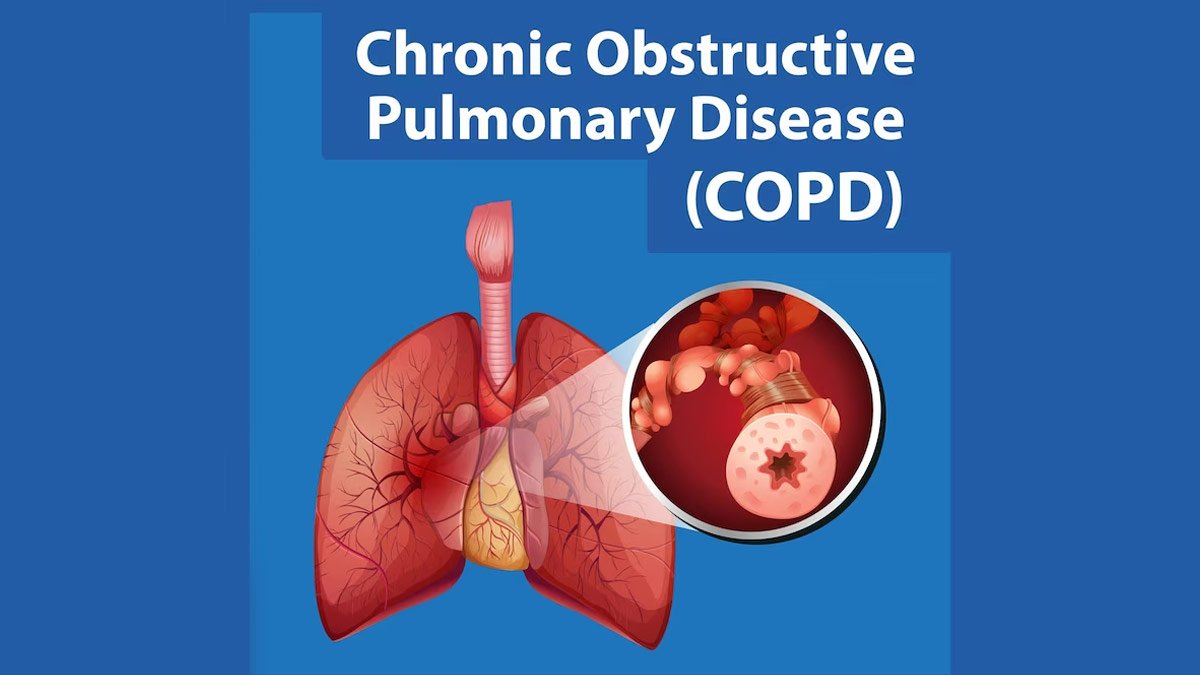
Chronic Obstructive Pulmonary Disease, or COPD, is a persistent respiratory disease that primarily affects the lungs, leading to obstructed airflow and breathing difficulties. Traditionally associated with smoking, COPD has been predominantly observed in middle-aged to elderly males. However, in countries like India, a significant number of females exposed to biomass fuel smoke in confined cooking areas also suffer from this condition. Further, the global rise in air pollution and suspended particulate matter has contributed to the increasing incidence of COPD, making it a concern for a broader demographic.
Table of Content:-

Risk Factors and Preventive Measures
Smoking and Biomass Fuel Exposure
“The primary risk factor for COPD is smoking, including exposure to secondhand smoke. In regions where the use of biomass fuel for cooking is prevalent, the confined exposure to smoke significantly increases the risk of developing COPD, particularly among women. Avoiding smoking and reducing exposure to biomass smoke are critical preventive measures,” said Dr Mihir Gangakhedkar, Consultant-Pulmonology, Fortis Hospital Mulund.
Also read: COPD Day 2021: Know All About Lung Attack And Tips To Manage This Condition
Environmental Factors
“With the escalating problem of air pollution, particulate matter has become a significant concern. High levels of pollutants in the air we breathe can lead to the development of COPD, even in non-smokers. Measures such as enhancing kitchen ventilation, promoting the use of cleaner fuels, and reducing exposure to environmental pollutants can help prevent the onset of COPD,” said Dr Gangakhedkar.
Social Interventions
“Strengthening laws related to tobacco use and enforcing regulations to control air pollution are essential steps in combating COPD. Social initiatives encouraging smoking cessation and raising awareness about the risks associated with biomass fuel are equally important,” Dr Gangakhedkar said, adding, Community support can play a pivotal role in changing behaviors and adopting healthier lifestyle choices.
COPD Management Strategies
Lifestyle Modifications
Simple changes in daily life can significantly impact the management of COPD. This includes quitting smoking, avoiding air pollutants, and engaging in regular physical activity to improve lung function. Additionally, patients are encouraged to wear masks in high-pollution areas and consider using green alternatives to reduce their carbon footprint.

Advanced Medical Interventions
In advanced stages, COPD can lead to severe complications, including heart problems and elevated carbon dioxide levels in the blood. Treatment options at this stage may involve the use of Bilevel Positive Airway Pressure (BiPAP) devices and continuous oxygen support to assist in breathing.
For a small percentage of patients with localized disease, surgical options like Bullectomy or Lung Volume Reduction Surgery may be viable, albeit with a careful assessment of risks and benefits. Pulmonary rehabilitation remains a cornerstone of managing COPD, offering significant benefits in terms of physical capacity and quality of life.
End-Stage COPD Treatment
For patients with end-stage COPD, where traditional treatments and interventions are no longer effective, lung or heart-lung transplantation may be considered. This option requires a comprehensive evaluation by a skilled medical team to determine the patient's eligibility and to manage the complexities associated with transplant surgery.
Also read: What Is The Link Between COPD And Air Pollution? Know Expert Tips To Manage Them
COPD is a multifaceted disease influenced by genetic, environmental, and lifestyle factors. While smoking remains a leading cause, the impact of air pollution and biomass fuel exposure cannot be overlooked. Preventive measures, coupled with early diagnosis and tailored management strategies, are important in mitigating the impact of COPD. As the world grapples with increasing pollution levels, a collective effort from individuals, communities, and governments is essential to address the root causes of COPD and improve the quality of life for those affected by this debilitating disease.
Also watch this video
How we keep this article up to date:
We work with experts and keep a close eye on the latest in health and wellness. Whenever there is a new research or helpful information, we update our articles with accurate and useful advice.
Current Version
